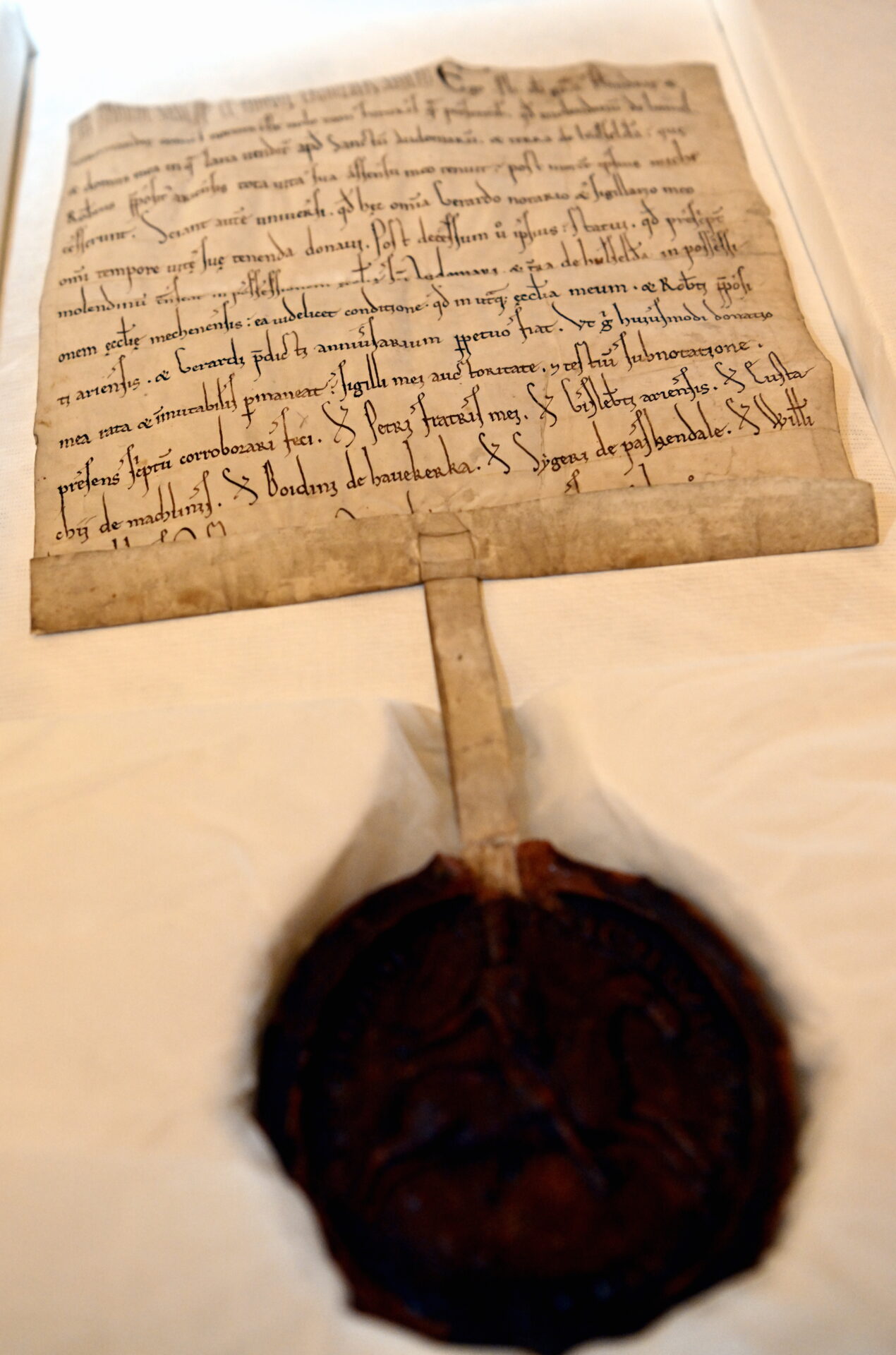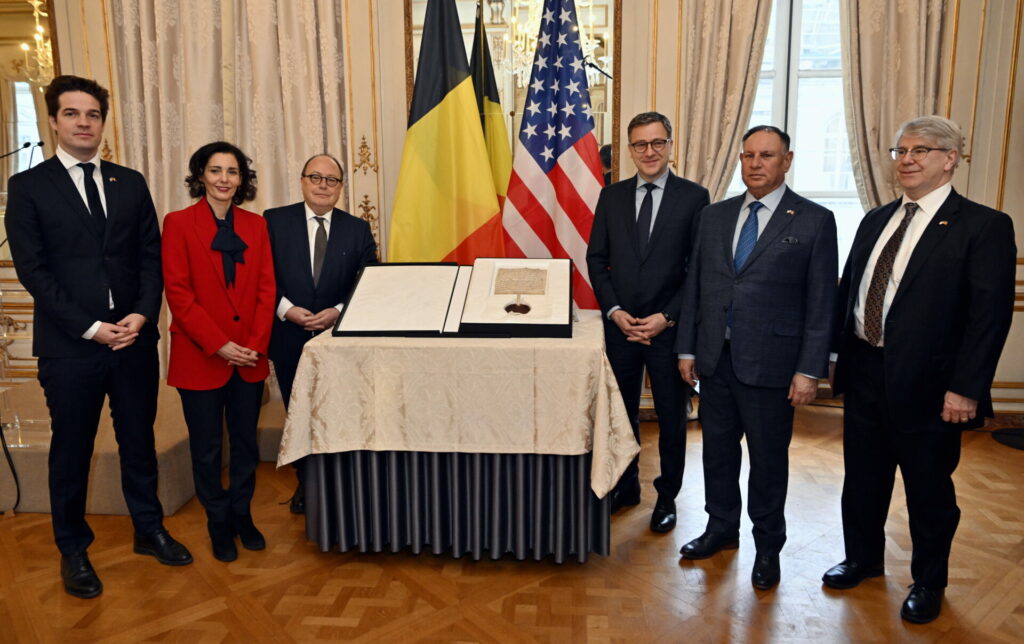A Flemish charter dating from 1176 has finally returned to Belgium after spending the last one hundred years at one of the world's most famous museums in the United States.
The historic document, which formally certifies a land grant from Philip of Alsace, Count of Flanders (1128-1168) to the Benedictine Abbey of Messines (Mesen) in West Flanders and is embellished with the Count's own highly elaborate seal, had previously been held by the Metropolitan Museum of Art in New York City ('the Met').
The document was formally handed over to the Belgian State Archives in a lavish ceremony at the Egmont Palace in Brussels on Thursday. Attendees included Minister of Foreign Affairs Hadja Lahbib, the Secretary of State for Scientific Policy Thomas Dermine, and the American Ambassador to Belgium Michael Adler.
"For us, it is important to show the general public that such documents have real value," Karel Velle, the Director-General of the Belgian National Archives, told Le Soir. "Of course, we should return what does not belong to us. On the other hand, we must find what we have lost."
A tangled history
The story of the charter is a long and complex one. For centuries, it had remained in the archives of the Abbey of Messines, which had remained the case even after 1776, when Queen Maria Theresa of Austria ordered that the Abbey be transformed into a military education institution.
The Abbey was then heavily damaged in the early stages of the First World War — specifically, in late October 1914 — after a bloody battle between British and German troops. Many German soldiers are reported to have subsequently taken documents from the Abbey's archives as souvenirs.

Credit: Eric Lalmand / Belga
Shortly after the war, an American, Bashford Dean, the Curator of Arms and Armour at the Met, acquired the charter from an "unregistered source" as he was travelling through Europe. He later donated it to the Met in 1923, where it had remained until Thursday.
"The American researcher handed over [document] to his research institution when he retired," Claude de Moreau de Gerbehaye, a researcher at the Belgian General Archives, told RTBF . "The document was kept at the Met in New York. It had been digitised and appeared on the Met's website. This is how a Belgian researcher, consulting this site, discovered the document and then contacted the State Archives."
Related News
- Today in History: Death of André Franquin, a ‘golden-age’ Belgian comic artist
- Nazi-looted artwork still hangs in Belgian museums
However, the process of recovering the document — which took almost four years — was complicated by numerous factors.
"On the one hand, we had never recovered a document from the United States," de Moreau de Gerbehaye explained. "So there were a number of things to settle, especially from a legal point of view. Secondly, we were cooperating with the Ministry of Foreign Affairs on the transfer of public archive documents. That was also a first. Finally, the Covid period complicated the process [of returning the charter]".
The charter will now be transferred to the State Archives depot in Bruges. Despite its return, Belgian State Archive researchers estimate that only about a seventh of the Abbey of Messines' original collection of archived documents has been recovered.

